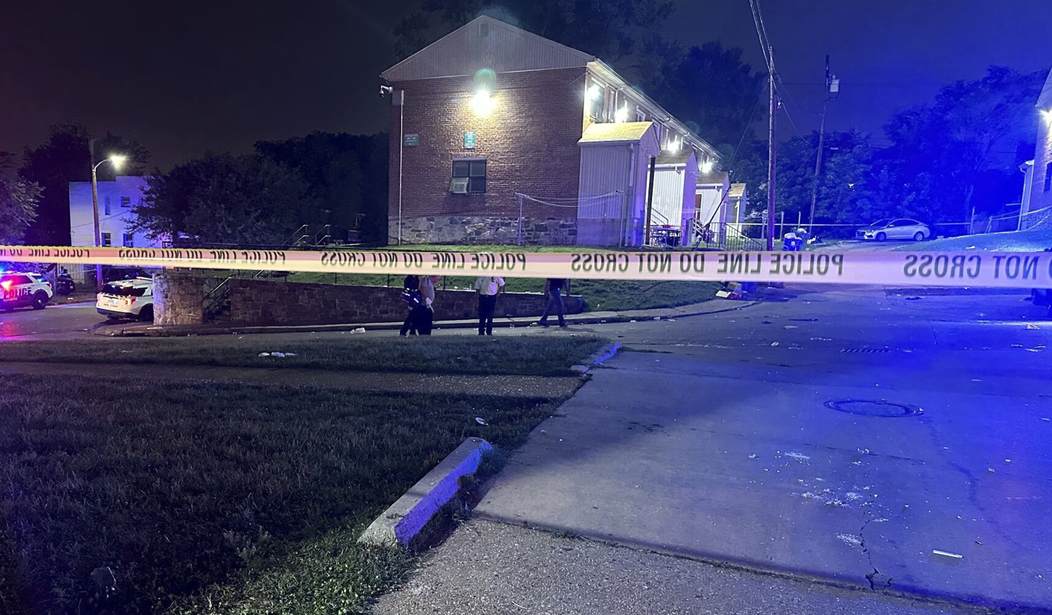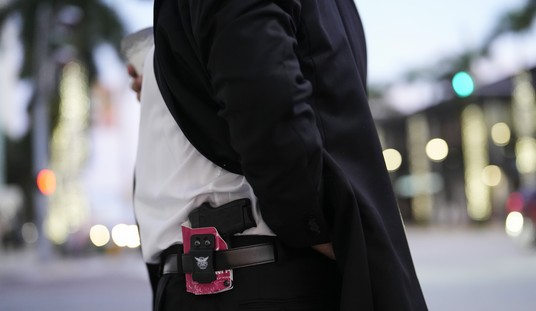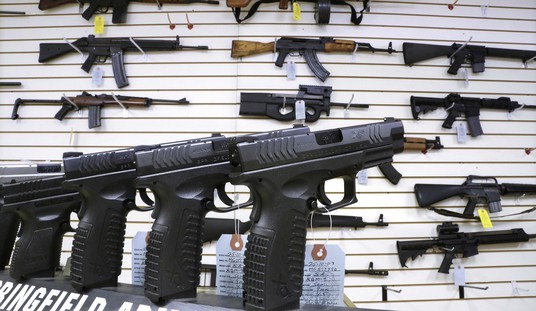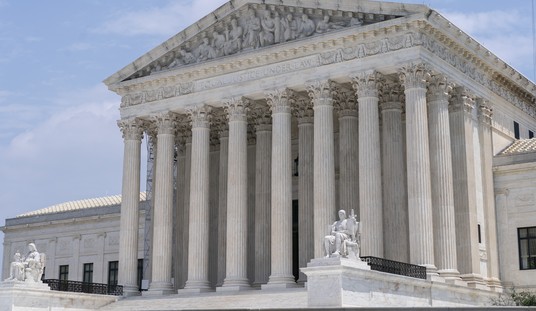For decades, gun control activists have insisted that more guns inevitably leads to more crime. The only way to make society safer, according to their twisted worldview, is to make it harder for people to protect themselves with a firearm.
That premise has run into a huge problem as of late; the fact that homicides and violent crime are declining at a staggering rate, and we're on pace to see the lowest homicide rate in decades. As the Washington Post reports:
The United States remains a violent nation, more so than many other high-income countries, but the rate of homicides has fallen dramatically for nearly four straight years. There were 5,965 fewer killings in 2024 than in 2021, figures from the FBI show.
The drop-off spans both red and blue states and has unfolded even as police departments have struggled to fill vacancies and Americans have purchased guns at a staggering pace — a practice often linked to higher rates of violence.
Yeah, often linked by gun control activists.
Gun owners, on the other hand, have known for quite some time that more guns doesn't equate to more crime. Dr. John Lott's book to that effect was first published in 1998, and is now in its third edition.
Lott's contention is that more guns leads to less crime, but a panel established by the United States National Research Council (largely in response to Lott's book and thesis) determined it a 2004 report that it "was unable to find any of the laws that it examined had any effect on crime or suicide rates."
In the case of right-to-carry laws, despite a large body of research, the committee found no credible evidence that the passage of right-to-carry laws decreases or increases violent crime, and there is almost no empirical evidence that the more than 80 prevention programs focused on gun-related violence have had any effect on children's behavior, knowledge, attitudes, or beliefs about firearms.
Still, the conventional wisdom among the gun control crowd and their allies in politics and the media is that you can't really combat violent crime without curbing legal gun ownership, and that theory has been utterly destroyed by what we've seen over the past few years.
Homicides (and gun ownership) soared in 2020 as the pandemic closed courthouses and emptied jails, while civil unrest and riots sent Americans hurrying to their local gun stores in record numbers. The spike in homicides, though, started to tail off almost immediately, and while gun sales have also cooled considerably since the Great Gun Run of 2020, we're still seeing hundreds of thousands of purchases every month.
If more guns equaled more crime, homicide rates would still be rising, just not as fast as they were a few years ago. Instead, as the Washington Post admits, we're currently on pace to see the lowest recorded homicide rate since 1960, when the FBI started keeping tabs on homicides across the country.
Most criminologists say a combination of factors is driving the trend — pandemic-era investments in local violence intervention programs, the increased enforcement of tougher laws, reopened schools, demographic change and a rebound in employment.
“There is no one reason or no silver bullet for what makes crime go up and crime go down,” said Insha Rahman of the Vera Institute of Justice, a liberal research organization. “Anyone who tells you otherwise is lying.”
Crime is also cyclical. Violent crime increased in the 1920s and the first half of the 1930s before falling for about a decade. There was a brief spike in crime after World War II ended, but crime rates were relatively steady until 1964, when they started climbing. That upward trend generally persisted until the early 1990s, when it began to decline. That drop was briefly arrested in 2020 and 2021, but now violent crime and homicide levels in most U.S. cities are at or below pre-pandemic averages.
While there may not be a single reason for the historic decline in homicides and violent crime, the Washington Post gives a lot of credit to those local violence intervention programs. Every program is different, of course, but it does make sense that targeting those who are most likely to be the instigator and victim of violence will have a much bigger impact on public safety than crafting a gun control law that will mainly be followed by lawful gun owners.
In Baltimore, for instance, where homicides are down 61% since 2021, the "citywide approach relies on a robust data and intelligence apparatus to identify those at high risk of being involved in violence, then deploys both law enforcement and social service support to try to keep that violence from happening."
The city’s data analysis showed that three-quarters of shootings in Baltimore involved fewer than 2 percent of city residents. Many of those people had extensive criminal histories that included being hurt and hurting others. Much of the violence was linked to group retaliation. And many involved men in their 30s and 40s.
The city created programs to identify, track down and try to help that age demographic. At the same time, officials also made sure that state, local and federal law enforcement agencies investigated the groups they believed were responsible for most of Baltimore’s violence.
This is essentially the Ceasefire model that I've written about many times before here at Bearing Arms. It's a carrot-and-stick approach to those most at risk of becoming an offender or victim. The message from officials is simple: You're going to stop shooting. We'll help you if you let us, but we'll make you if you don't.
Ceasefire offers everything from GED programs to mental health counseling and mentoring for these at-risk individuals. At the same time, if someone ends up getting arrested and charged with a violent crime their cases are referred to federal court whenever possible, where a lengthy sentence is much more likely. Even if the charges remain in the hands of local prosecutors, no plea deals are offered, and offenders are taken off the streets for as long as the law allows.
There are good reasons for gun owners and Second Amendment advocates to support this strategy, even if the gun control lobby has also leaned in to community violence intervention programs in recent years. For starters, these programs can be implemented without putting any new gun laws in place. They're also focused on deterring violent crime, not legal gun ownership. And for fiscal conservatives, they're also more cost effective than the "arrest our way to safety" philosophy that the gun control lobby still bitterly clings to.
As effective as these violence intervention programs can be, they're not all created equal, and a lack of transparency and accountability in spending grant money is a genuine concern. I would argue that these programs work best when they're conducted alongside law enforcement efforts targeting prolific offenders, instead of trying to replace them. And many of these programs (along with the strategy of targeted deterrence by police) have been around for decades, so I don't believe they're solely responsible for the historic decline in homicides that we're seeing right now.
I suspect that we're also seeing Lott's thesis at work. More legal gun owners is liable to lead to at least some small cohort of would-be criminals to decide not to engage in a robbery, carjacking, or home invasion. As the WSJ has also helpfully pointed out recently (while attacking Stand Your Ground laws), the number of justified homicides in Stand Your Ground states is up sharply since 2019, which is also likely having a deterrent effect on violent actors.
Again, there's more than one reason why violent crime is dropping at a record pace, but fewer guns isn't one of them. The gun control lobby's fundamental belief is being disproved on a daily basis, and it's nice to see the Washington Post acknowledge that reality in its pages.









